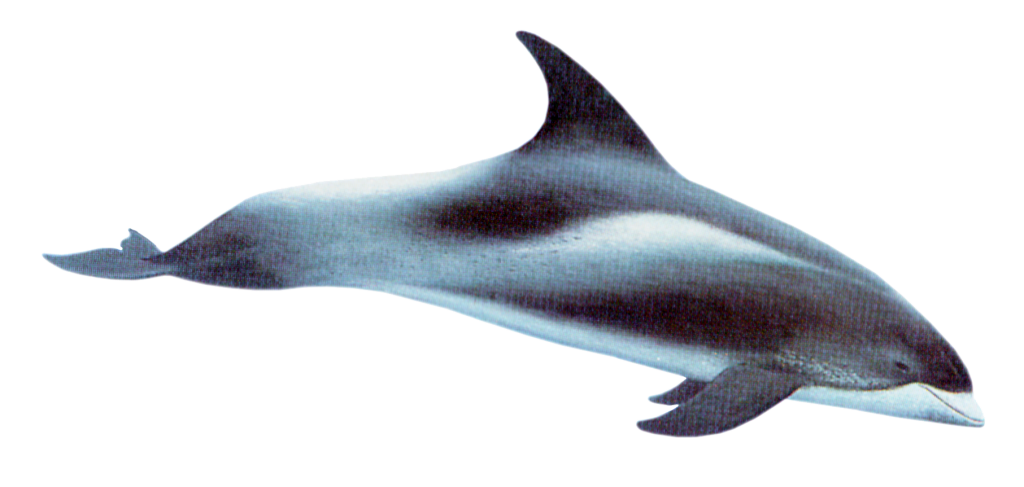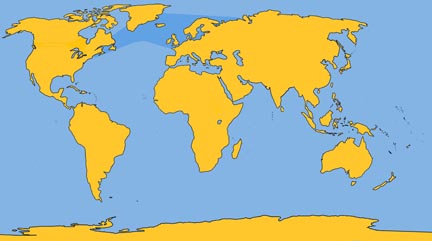 Family: Delphinidae
Family: Delphinidae
Genus: Lagenorhynchus
Species: L. albirostris (Gray, 1846)
Common names can be misleading. In some geographic areas, this animal has a gray beak or even a dark one. It is the northernmost member of a worldwide genus; although they are fairly common, no white-beaked dolphin has even been kept in captivity successfully, and little is known about them. White-beaked dolphins are such fast swimmers that they create a “rooster tail” wake, as do Dall’s porpoises. They are not known to ride bow waves of vessels.
Physical Description: They possess a very stocky body with a small but distinct beak.
Color: The dorsal region is dark gray to, and including, the tail, converging to lighter gray flanks and a white ventral region. The upper and lower rostrum areas are usually white but can be dark. The flippers and flukes are entirely dark. Each flank displays a poorly defined white stripe from just below the dorsal fin to the lower peduncle. Dull white is also visible from behind the dorsal fin extending down the dorsal ridge to disappear into dark gray at the tail.
Fins and Flukes: The falcate dorsal fin is tall and prominent. Medium-sized flippers are very well defined and pointed at the tips. The flukes are pointed at the tips, with a definite median notch.
Length and Weight: This dolphin reaches 10 ft (3 m) and an estimated 500 to 600 lb (227 to 272 kg).
Teeth: 22 to 28 small, conical teeth are found in each side of the upper and lower jaws.
Feeding: They are known to feed on squid, cod, herring, octopus, capelin, and small crustaceans.
Breathing and Diving: More information is needed to describe breathing and diving patterns.
Mating and Breeding: Calves are born at about 3.75 ft (114 cm) and 66 lb (40 kg), probably between June and September. They are quite large, probably because of birth into cold water, which requires a thick blubber layer. Sexual maturity is reached at about 6.5 ft (1.95 m).
Herding: Observed in herds as large as 1,500 individuals; groups of 6 to 10 are quite common.
Distribution: Restricted to coastal regions of the North Atlantic Ocean from New England east to the Barents Sea and the North Sea.
Migration: There may be a migration to the Davis Strait in spring and late autumn, with a southern movement in the winter evidently as far as Cape Cod, Massachusetts, where they may remain until the early spring or summer months.







